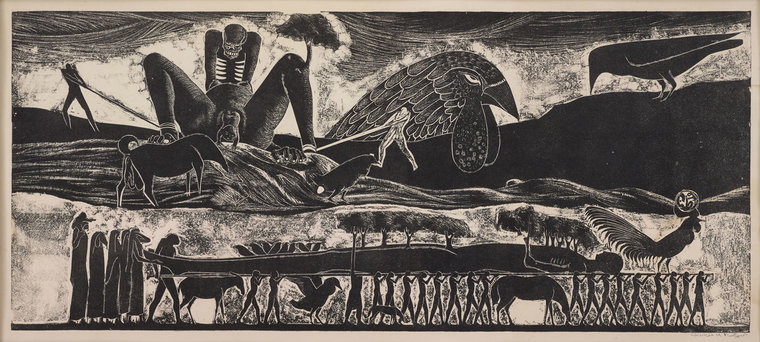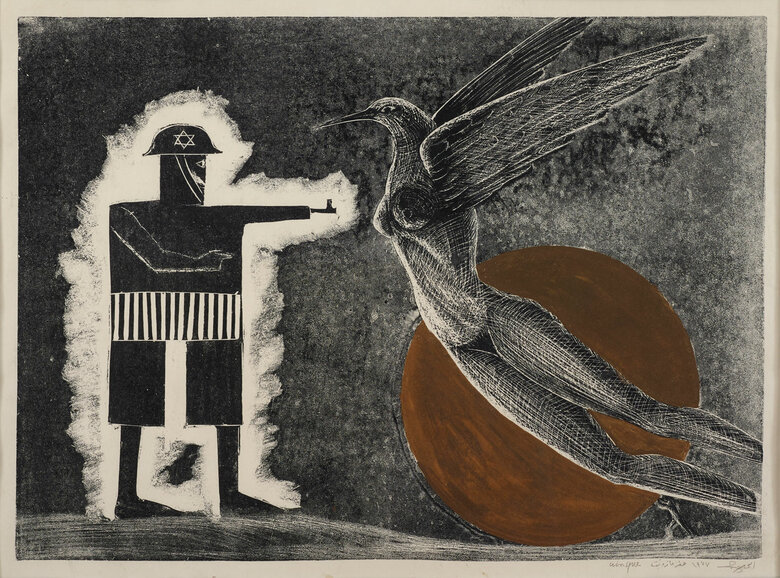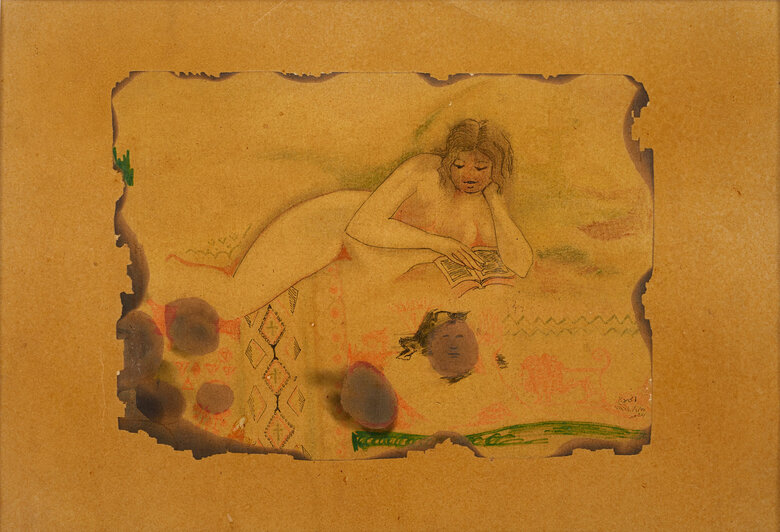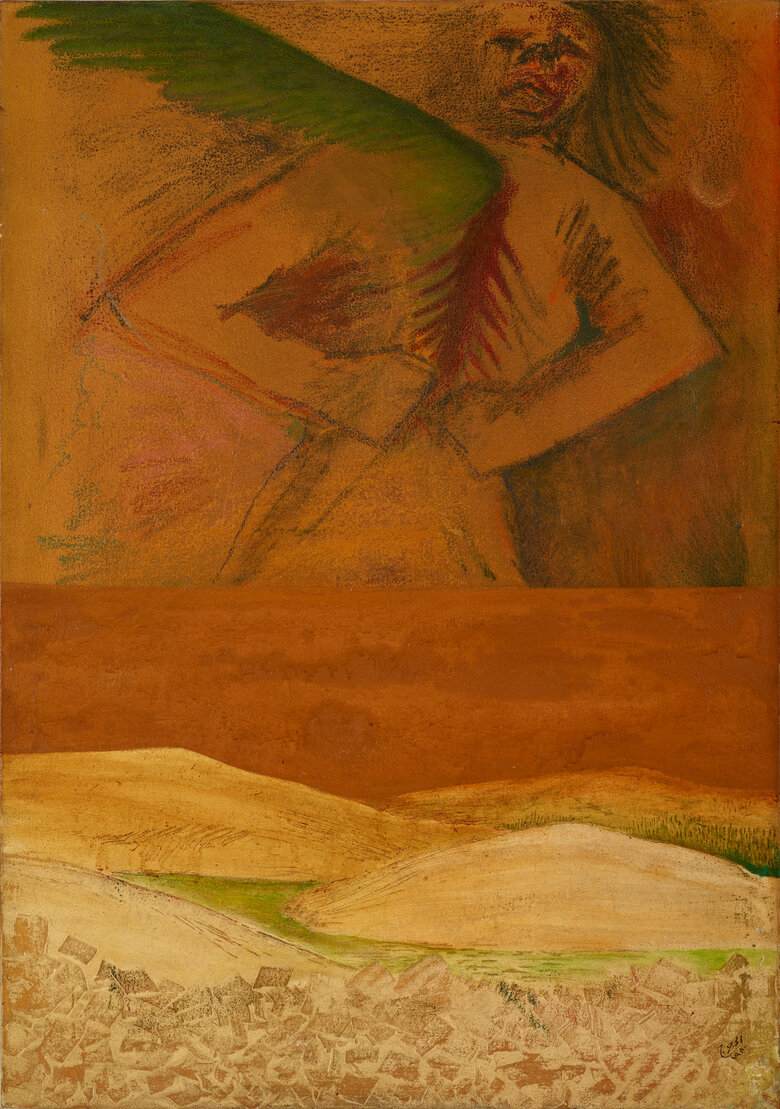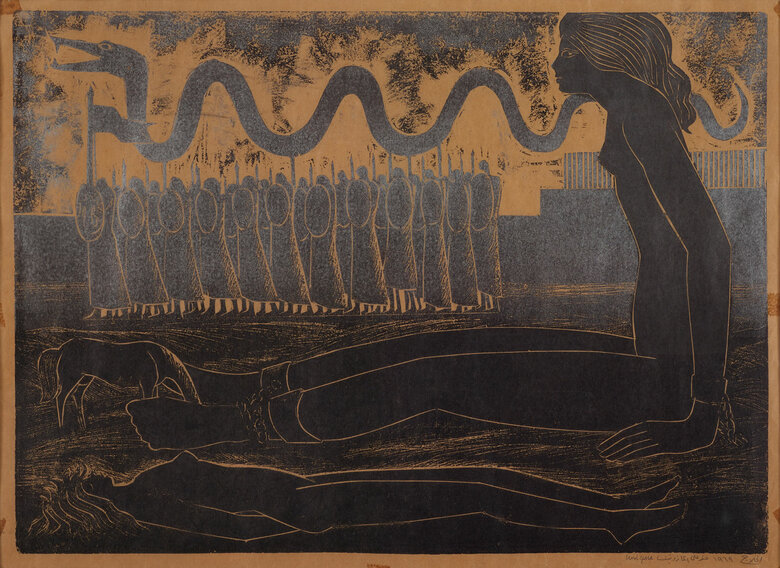This print delivers a vision filled with "monstrous hybrid creatures, disorienting and impossible perspectives," where the artist renders human and animal figures into flattened shapes with stylized lines. In Untitled, 1970, El Hallaj employs a woodcut printing technique known as masonite engraving, whereby an image is cut into masonite wood, creating a relief print. The raised segments are inked and printed on paper, while the cut-away areas remain blank. Around the late 1960s, El Hallaj, who led a migratory lifestyle, began to focus on woodcut printing due to the accessibility of its material. The mobility and reproducibility of the print medium were crucial to the Palestinian cause. He used inexpensive materials like masonite and plastic sheeting, often carving with crude tools such as nails. Over time, he refined his technique, eventually using a jeweler’s drill to engrave masonite plates, which he could easily transport while traveling.
Untitled, 1970, with its visual accumulation of mythology, absurdity, and agitation, resembles a hallucination, exemplifying El Hallaj’s distinctive aesthetic, described by art historian Allesandra Amin as a “fantasmagorical landscape." The foreground of the print reveals a funeral procession, typical of ancient Egyptian tradition, featuring a deceased individual on a stretcher carried by a procession of hybrid human-animal figures of varying sizes. These faceless figures, reminiscent of Egyptian friezes, are shown in flat side profiles, adhering to a hierarchy of proportion where the most important figure, the deceased, is the largest. The corpse sprouts trees from his body, suggesting renewal and rebirth. The background is textured with circular scratchings, evoking clouds or a dreamlike atmosphere. Leading the procession is a rooster, holding a round banner atop its head, inscribed with the word Palestine in Arabic calligraphy. The rooster, symbolizing the Mesopotamian God of war, the underworld, and fire, acts as the bearer of Palestine, guiding the procession through a hellish backdrop.
In the background, images of violence, birth, and feeding emerge. A woman, dog, and chicken are in the throes of birth on a textured hill. The woman, her face obscured, lies with legs spread, ankles tied, and pulled by two faceless men. A baby emerges between her legs as she clutches the ground, and a tree grows from her thigh. Above her stomach and breasts, a skeletal figure looks down menacingly, perhaps strangling or smothering her. She gives birth in the shadow of death and sexual violence, and her movement is restricted. In El Hallaj's prints, women's bodies serve as vessels to articulate the hardship and adamant resistance of the Palestinian people, insisting on life despite the imminent threat of death. The woman giving birth under adversity in Untitled, 1970, symbolizes Palestinian steadfastness through reproduction and continuity.
El Hallaj’s allegorical print blends tragedy with absurdity and surrealism, merging ancient mythologies and nationalist iconography. This print eulogizes the martyrdom and mourns the horrific violence of occupation and ethnic cleansing.
Signed, dated and inscribed with medium in Arabic on the lower left front

